bubble
Nicolette Tosunian-
Americans hate to lose, especially when it comes to money, and they've demanded an accounting of the misdeeds of the bubble era. A certain number of former chief executives, like Bernard Ebbers of WorldCom, and Martha Stewart had to answer charges and finally Enron's Skilling and Lay have finally been convicted. The 1920's Bubble came to an end when interest rates rose high enough to precipitate a liquidity crises and even though Hoover arranged to lower interest rates from 6.5% down to 1% in less than a year, there was no reversing the burst bubble (you can't unscramble an egg or repair a Burst bubble).
(http://www.gold-eagle.com/editorials_05/baltin053006.html)
Americans hate to lose, especially when it comes to money, and they've demanded an accounting of the misdeeds of the bubble era. A certain number of former chief executives, like Bernard Ebbers of WorldCom, and Martha Stewart had to answer charges and finally Enron's Skilling and Lay have finally been convicted. The 1920's Bubble came to an end when interest rates rose high enough to precipitate a liquidity crises and even though Hoover arranged to lower interest rates from 6.5% down to 1% in less than a year, there was no reversing the burst bubble (you can't unscramble an egg or repair a Burst bubble).
(http://www.gold-eagle.com/editorials_05/baltin053006.html)
canned food
Nicolette Tosunian-
A lot of time was taken up in preparing and cooking meals. Data from 1920 reveals that 44 hours were spent on preparing meals and cleaning up after them each week. As vitamins began to be discovered from 1912 on, fruit, vegetables and milk became much more important than they had in the earlier years. For the first time people could drink fresh orange juice year round due to improvements in storage and transport.
(http://www.1920-30.com/food/)
A lot of time was taken up in preparing and cooking meals. Data from 1920 reveals that 44 hours were spent on preparing meals and cleaning up after them each week. As vitamins began to be discovered from 1912 on, fruit, vegetables and milk became much more important than they had in the earlier years. For the first time people could drink fresh orange juice year round due to improvements in storage and transport.
(http://www.1920-30.com/food/)
technicolor
Nicolette Tosunian-
The first all-color sound musical production (in two-strip Technicolor) was Warners' and director Alan Crosland's backstage musical On With the Show! (1929), famous for Ethel Waters singing "Am I Blue?" Another popular early musical was the first of a film series - director Roy Del Ruth's Technicolor The Gold Diggers of Broadway (1929) - it was the second full-length color sound feature film ever made. It was famous for "Tip-Toe Through the Tulips With Me" and "Painting the Clouds with Sunshine"by Nick Lucas, who also starred in the film. It was a remake of the silent, non-musical comedy film about chorus girls, The Gold Diggers (1923) - and it was followed by Mervyn LeRoy's musical remake The Gold Diggers of 1933 (1933).
(http://webcache.googleusercontent.com/)
The first all-color sound musical production (in two-strip Technicolor) was Warners' and director Alan Crosland's backstage musical On With the Show! (1929), famous for Ethel Waters singing "Am I Blue?" Another popular early musical was the first of a film series - director Roy Del Ruth's Technicolor The Gold Diggers of Broadway (1929) - it was the second full-length color sound feature film ever made. It was famous for "Tip-Toe Through the Tulips With Me" and "Painting the Clouds with Sunshine"by Nick Lucas, who also starred in the film. It was a remake of the silent, non-musical comedy film about chorus girls, The Gold Diggers (1923) - and it was followed by Mervyn LeRoy's musical remake The Gold Diggers of 1933 (1933).
(http://webcache.googleusercontent.com/)
Candy Bars
Roman. (0) )
In 1921, the first Hershey's kiss was wrapped with a white flag in a production line. The American love affair with the chocolate bar had begun. Mounds, Reese's peanut butter cups, and the Milky way were all invented in the early 20's. As the Americans missed their abroad treat more than 40,000 different brands of chocolate bars appearing in the market place.
http://www.candyfavorites.com/shop/catalog-candybars-history.php
http://www.mce.k12tn.net/chocolate/history/history_of_chocolate6.htm
In 1921, the first Hershey's kiss was wrapped with a white flag in a production line. The American love affair with the chocolate bar had begun. Mounds, Reese's peanut butter cups, and the Milky way were all invented in the early 20's. As the Americans missed their abroad treat more than 40,000 different brands of chocolate bars appearing in the market place.
http://www.candyfavorites.com/shop/catalog-candybars-history.php
http://www.mce.k12tn.net/chocolate/history/history_of_chocolate6.htm
Hoover vacuum
Roman. (0) )
In olden times whenever a rug was dirty, as in truly dirty, the house keeper would have to take the rug out side and beat it. In 1908 the vacuum the primitive vacuum was invented but, it only caught like wildfire when the people of the 20's had excess money and no war going on. In 1926 the improvement of the "Beating bar" with bristles was the predecessor to the vacuum today.
http://www.geyservac.com/information/hoover-vacuums.html
In olden times whenever a rug was dirty, as in truly dirty, the house keeper would have to take the rug out side and beat it. In 1908 the vacuum the primitive vacuum was invented but, it only caught like wildfire when the people of the 20's had excess money and no war going on. In 1926 the improvement of the "Beating bar" with bristles was the predecessor to the vacuum today.
http://www.geyservac.com/information/hoover-vacuums.html
shaving sticks
Roman. (0) )
In the 1920's there was no such thing as aerosol cans of shaving cream. Cream was either sold in tubes similar to toothpaste or in a boxed powder, similar to baking soda. Then Colgate capitalized on the creation of the shaving stick a cleaver invention that helped in the application of the cream. The stick was used by first wetting the face then rubbing the stick on your face creating a lather at the base of the beard. This was highly advertised as a non waste product and as a reusable value.
http://www.vintageadbrowser.com/shaving-ads-1920s
In the 1920's there was no such thing as aerosol cans of shaving cream. Cream was either sold in tubes similar to toothpaste or in a boxed powder, similar to baking soda. Then Colgate capitalized on the creation of the shaving stick a cleaver invention that helped in the application of the cream. The stick was used by first wetting the face then rubbing the stick on your face creating a lather at the base of the beard. This was highly advertised as a non waste product and as a reusable value.
http://www.vintageadbrowser.com/shaving-ads-1920s
hair dryer
Roman. (0) )
The first true hair dryer was invented in 1920.It is said that this was inspired by cleaver housewives attaching a hose to a vacuum cleaner's exhaust. The first dryers were made of steel or zinc and had wooden handles. Because of their low voltage they were inefficient but still adopted and liked by flappers.
http://www.ideafinder.com/history/inventions/hairdryer.htm
http://www.ehow.com/about_4618666_who-invented-hairdryer.html
The first true hair dryer was invented in 1920.It is said that this was inspired by cleaver housewives attaching a hose to a vacuum cleaner's exhaust. The first dryers were made of steel or zinc and had wooden handles. Because of their low voltage they were inefficient but still adopted and liked by flappers.
http://www.ideafinder.com/history/inventions/hairdryer.htm
http://www.ehow.com/about_4618666_who-invented-hairdryer.html
Ford Model t
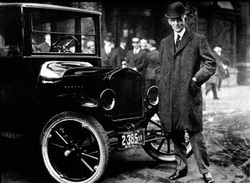
Bryanna Chrisp-
Although Ford Model T began production and sales distribution in 1908, the vehicle was purchased and very popular during the 1920's. The every man could afford to purchase one for the starting price of $825. The car became a popular hangout for dates and trendy means of transporatation. A common nickname coined for the Model T was the "Tin Lizzie".
(http://www.modelt.ca/background.html) ( http://www.ridelust.com/today-in-history-the-ford-model-t-is-born/)
Although Ford Model T began production and sales distribution in 1908, the vehicle was purchased and very popular during the 1920's. The every man could afford to purchase one for the starting price of $825. The car became a popular hangout for dates and trendy means of transporatation. A common nickname coined for the Model T was the "Tin Lizzie".
(http://www.modelt.ca/background.html) ( http://www.ridelust.com/today-in-history-the-ford-model-t-is-born/)
Schick Electric Razor
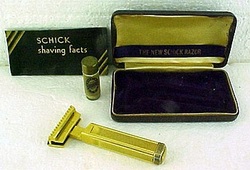
Caitlin Stryker
U.S. Army Lieutenant Colonel Jacob Schick was frustrated with the difficulty he experienced trying to "wet shave" in subzero temperature. It was in these frigid conditions that the idea of an electric razor was born. In 1927, Schick succeeded with his dry shaver, and a year later became so convinced that the "wet shave" method would be doomed by the electric razor that he started a separate corporation to manufacture and sell Schick electric razors. He sold all his interest in the Magazine Repeating Razor Company to the president of the American Chain and Cable Company.
(http://www.schick.com/us/shaving-history.shtml)
U.S. Army Lieutenant Colonel Jacob Schick was frustrated with the difficulty he experienced trying to "wet shave" in subzero temperature. It was in these frigid conditions that the idea of an electric razor was born. In 1927, Schick succeeded with his dry shaver, and a year later became so convinced that the "wet shave" method would be doomed by the electric razor that he started a separate corporation to manufacture and sell Schick electric razors. He sold all his interest in the Magazine Repeating Razor Company to the president of the American Chain and Cable Company.
(http://www.schick.com/us/shaving-history.shtml)
Pez Candies
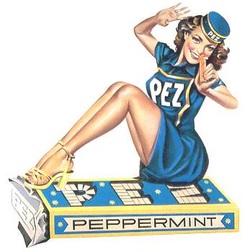
Caitlin Stryker
Originally created as an alternative to smoking, Eduard Haas first created Pez candy and the original Pez dispenser in 1927. In the mid 1920s, Haas sought peppermint oil from a chemist to create what he intended to be a sophisticated, strong, cold-pressed peppermint candy. He called the tiny, sugar-based tablets, made brick-shaped for ease in machine-wrapping, "Pez," short for "Pfefferminze," the German word for peppermint. The candies were immediately popular among his friends and colleagues, and before long he created attractive pocket-sized tins for packaging them.
(http://web.mit.edu/invent/iow/haas.html)
Originally created as an alternative to smoking, Eduard Haas first created Pez candy and the original Pez dispenser in 1927. In the mid 1920s, Haas sought peppermint oil from a chemist to create what he intended to be a sophisticated, strong, cold-pressed peppermint candy. He called the tiny, sugar-based tablets, made brick-shaped for ease in machine-wrapping, "Pez," short for "Pfefferminze," the German word for peppermint. The candies were immediately popular among his friends and colleagues, and before long he created attractive pocket-sized tins for packaging them.
(http://web.mit.edu/invent/iow/haas.html)
first Sat Test
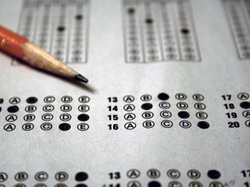
Caitlin Stryker
Carl C. Brigham first worked to develop an IQ test for the Army, but also was the inventor of the SAT. Around 1925, Brigham administered his own objective version of his Army test to Princeton freshmen as well as to applicants to Cooper Union, an all-scholarship technical college in New York City. The College Board decided to put him in charge of a committee to develop a test that could be used by a wider group of schools. This test become known as the SAT. In 1926 the SAT is administered to high school students for the first time.
(http://www.pbs.org/wgbh/pages/frontline/shows/sats/where/timeline.html)
Carl C. Brigham first worked to develop an IQ test for the Army, but also was the inventor of the SAT. Around 1925, Brigham administered his own objective version of his Army test to Princeton freshmen as well as to applicants to Cooper Union, an all-scholarship technical college in New York City. The College Board decided to put him in charge of a committee to develop a test that could be used by a wider group of schools. This test become known as the SAT. In 1926 the SAT is administered to high school students for the first time.
(http://www.pbs.org/wgbh/pages/frontline/shows/sats/where/timeline.html)
Electric Television
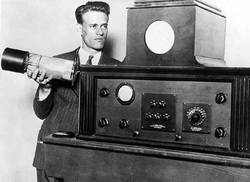
Caitlin Stryker
There was not just one inventor of the television but a compliation of several different inventions over time dating back to 1897. However in 1927, Philo Farnsworth was the first inventor to transmit a television image made up of 60 horizontal lines. The image transmitted was a dollar sign. Farnsworth developed the dissector tube, the basis of all current electronic televisions and filed for his first television patent in 1927 (patent #1,773,980). This was the first working electric television (electic uses a cathode while mechanical uses a rotating).
(http://inventors.about.com/od/tstartinventions/a/Television.htm)
There was not just one inventor of the television but a compliation of several different inventions over time dating back to 1897. However in 1927, Philo Farnsworth was the first inventor to transmit a television image made up of 60 horizontal lines. The image transmitted was a dollar sign. Farnsworth developed the dissector tube, the basis of all current electronic televisions and filed for his first television patent in 1927 (patent #1,773,980). This was the first working electric television (electic uses a cathode while mechanical uses a rotating).
(http://inventors.about.com/od/tstartinventions/a/Television.htm)
Kool Aid

Kelsey Chittum
Edwin Perkins was always interested in chemistry as a child. He would always mix house hold products hoping to make an excellent concoction. His father owned a general store in which he helped manage. He was inspired to make Kool Aid because a drink called “Fruit Smack” that was sold at his family’s store. “Fruit Smack” was almost impossible to transport because the bottles were heavy which cost a lot of money and the bottles would continually break. In 1927, Perkins developed a way to remove all the water from fruit drinks leaving only behind a light weight powder, all you had to do was add water. This was ideal because it was lightweight, which made it easier to ship. By 1929 Kool Aid became a national product and Perkins became rich.
(http://web.mit.edu/invent/iow/perkins.html)
Edwin Perkins was always interested in chemistry as a child. He would always mix house hold products hoping to make an excellent concoction. His father owned a general store in which he helped manage. He was inspired to make Kool Aid because a drink called “Fruit Smack” that was sold at his family’s store. “Fruit Smack” was almost impossible to transport because the bottles were heavy which cost a lot of money and the bottles would continually break. In 1927, Perkins developed a way to remove all the water from fruit drinks leaving only behind a light weight powder, all you had to do was add water. This was ideal because it was lightweight, which made it easier to ship. By 1929 Kool Aid became a national product and Perkins became rich.
(http://web.mit.edu/invent/iow/perkins.html)
Kotex
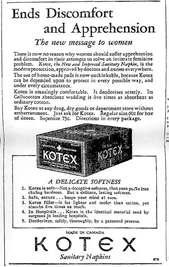
Kelsey Chittum
The material for Kotex was first used in bandages for American soldiers during World War I. Kotex was invented and produced by Kimberly-Clarke in 1917. The material was used because it was more absorbent than cotton and half the cost. When Kotex was used as a product for women in 1921, it was a big hit because it was cheap and also dispensable. Up until this point, women wore diapers made of birds eye clothe, in which they would have to wash after every use. Not only was this new product more comfortable, but it was a huge convenience for women. Kotex was made of Cellucotton and was held up with a belt. By the end of the decade, Kotex was a trusted brand among women.
Book (Kotex, Kleenex, Huggies: Kimberly-Clark and the consumer revolution in American business)
The material for Kotex was first used in bandages for American soldiers during World War I. Kotex was invented and produced by Kimberly-Clarke in 1917. The material was used because it was more absorbent than cotton and half the cost. When Kotex was used as a product for women in 1921, it was a big hit because it was cheap and also dispensable. Up until this point, women wore diapers made of birds eye clothe, in which they would have to wash after every use. Not only was this new product more comfortable, but it was a huge convenience for women. Kotex was made of Cellucotton and was held up with a belt. By the end of the decade, Kotex was a trusted brand among women.
Book (Kotex, Kleenex, Huggies: Kimberly-Clark and the consumer revolution in American business)
Iron lung
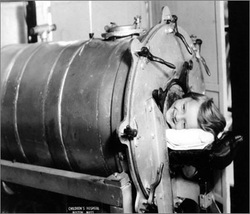
Kelsey Chittum
During the twenties, Polio was a untreatable disease. America's own president Franklin Roosevelt suffered from polio. Im some cases, Polio would paralyze those muscles necessary for breathing. In 1928, Philip Drinker invented the Iron Lung. This innovation, would allow a person suffering from respiratory failure to breath. Before Drinker's invention, air would be forced into patients lung and it would often cause chest pain because the amount of air was too much for a persons lungs to handle. The Iron Lung worked because the patients body would be put into an air-tight metal container while their head was outside. The container was connected to pump which decreased the air pressure inside the container causing the patients lungs to expand and contract, just like in real breathing. An eight-year-old girl that suffered from respiratory failure as a result of polio, was the first person to be put into the iron lung at a children's hospital in Boston.
(http://www.faqs.org/health/topics/91/Iron-lung-and-other-respirators.html)
During the twenties, Polio was a untreatable disease. America's own president Franklin Roosevelt suffered from polio. Im some cases, Polio would paralyze those muscles necessary for breathing. In 1928, Philip Drinker invented the Iron Lung. This innovation, would allow a person suffering from respiratory failure to breath. Before Drinker's invention, air would be forced into patients lung and it would often cause chest pain because the amount of air was too much for a persons lungs to handle. The Iron Lung worked because the patients body would be put into an air-tight metal container while their head was outside. The container was connected to pump which decreased the air pressure inside the container causing the patients lungs to expand and contract, just like in real breathing. An eight-year-old girl that suffered from respiratory failure as a result of polio, was the first person to be put into the iron lung at a children's hospital in Boston.
(http://www.faqs.org/health/topics/91/Iron-lung-and-other-respirators.html)
Traffic Light
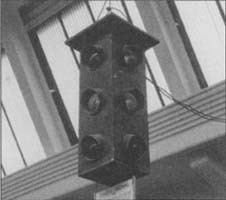
Kelsey Chittum
William Plotts, a police officer in Detriot invented the first street traffic signal in 1920. With the recent invention of thr automobile, Plotts saw a growing need for traffic regulation. He refrenced railroad signals and adapted the system for civilian use. The first street light was installed on the corner of Woodward and Michigan Avenue. Within the following year, fifteen traffic lights were installed in Detriot.
(http://www.ideafinder.com/history/inventions/trafficlight.htm)
William Plotts, a police officer in Detriot invented the first street traffic signal in 1920. With the recent invention of thr automobile, Plotts saw a growing need for traffic regulation. He refrenced railroad signals and adapted the system for civilian use. The first street light was installed on the corner of Woodward and Michigan Avenue. Within the following year, fifteen traffic lights were installed in Detriot.
(http://www.ideafinder.com/history/inventions/trafficlight.htm)
IBM (International Business Machines)
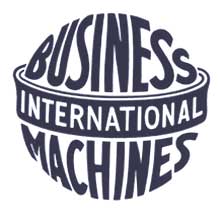
-Zachary Brown-
In 1920 IBM, it introduced the lock autograph recorder, the first complete school time control system, and launched the Electric Accounting Machine. In 1921, IBM bought the Chicago based Ticketograph Company , as well as certain patents and other property of the Peirce Accounting Machine Company. In 1923 the first electric key punch was developed, which would set C-T-R's tabulating equipment apart from the mechanically driven one's of IBM competitors for some years. In 1924 The Carroll Rotary Press was developed to make cards at high speed, and punched card capacity was doubled. In 1925, The horizontal sorting machine was developed with a speed of 360 cards per minute, and the first standard duplicator was produced. In 1926, IBM's product line wins grand prizes at the Sesquicentennial Exposition in Philadelphia. The first automatic gang punch was developed in 1927. In 1928, IBM redesigned the punch card to hold 80 columns, almost double the previous capacity, these cards, known as "IBM cards" became so popular that the name essentially became synonymous with punched cards. Also in 1928, The IBM Type 4 Tabulator , the first direct subtraction machine, is produced, as well as the first public address and program signaling systems, (or P.A. System) for schools were developed (and are known later as "Schoolmaster".). Lastly, in 1929, The first card counting printing sorter is developed, and shipped.
(http://www-03.ibm.com/ibm/history/history/decade_1920.html)
In 1920 IBM, it introduced the lock autograph recorder, the first complete school time control system, and launched the Electric Accounting Machine. In 1921, IBM bought the Chicago based Ticketograph Company , as well as certain patents and other property of the Peirce Accounting Machine Company. In 1923 the first electric key punch was developed, which would set C-T-R's tabulating equipment apart from the mechanically driven one's of IBM competitors for some years. In 1924 The Carroll Rotary Press was developed to make cards at high speed, and punched card capacity was doubled. In 1925, The horizontal sorting machine was developed with a speed of 360 cards per minute, and the first standard duplicator was produced. In 1926, IBM's product line wins grand prizes at the Sesquicentennial Exposition in Philadelphia. The first automatic gang punch was developed in 1927. In 1928, IBM redesigned the punch card to hold 80 columns, almost double the previous capacity, these cards, known as "IBM cards" became so popular that the name essentially became synonymous with punched cards. Also in 1928, The IBM Type 4 Tabulator , the first direct subtraction machine, is produced, as well as the first public address and program signaling systems, (or P.A. System) for schools were developed (and are known later as "Schoolmaster".). Lastly, in 1929, The first card counting printing sorter is developed, and shipped.
(http://www-03.ibm.com/ibm/history/history/decade_1920.html)
Polystyrene

-Zachary Brown-
A step forward in the development of Polystyrene, was taken in 1922 by Dufraisse and Moureu, who found that a monomer could be stabilized by adding small amounts of aromatic amines and phenols. This led to the use of the reaction to study the mechanism of polymerization through the 1920s.
all from: (http://www.suite101.com/content/the-history-of-polystyrene-a125878)
A step forward in the development of Polystyrene, was taken in 1922 by Dufraisse and Moureu, who found that a monomer could be stabilized by adding small amounts of aromatic amines and phenols. This led to the use of the reaction to study the mechanism of polymerization through the 1920s.
all from: (http://www.suite101.com/content/the-history-of-polystyrene-a125878)
refrigerators/Freezers
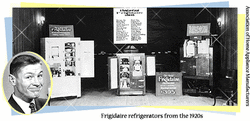
-Zachary Brown-
In the 1920s and '30s, American consumers were first introduced to Refrigerators w/ Freezers when the first electric refrigerators with ice cube compartments came on the market. Mass production of modern refrigerators didn't get started until after World War II.
(http://www.keepitcool.com/history_of_the_refrigerator2.htm)
In the 1920s and '30s, American consumers were first introduced to Refrigerators w/ Freezers when the first electric refrigerators with ice cube compartments came on the market. Mass production of modern refrigerators didn't get started until after World War II.
(http://www.keepitcool.com/history_of_the_refrigerator2.htm)
First Oxford English Dictionary Published
-Zachary Brown-
In April of 1928, the last volume of what is now known as The Oxford English Dictionary, was published. It was first released under the imposing name, A New English Dictionary on Historical Principles, and it contained over 400,000 words and phrases in ten volumes.
(http://www.oed.com/public/oedhistory/history-of-the-oed;jsessionid=E16F9182C4CD3E1D0CB695A212C04973#steps)
In April of 1928, the last volume of what is now known as The Oxford English Dictionary, was published. It was first released under the imposing name, A New English Dictionary on Historical Principles, and it contained over 400,000 words and phrases in ten volumes.
(http://www.oed.com/public/oedhistory/history-of-the-oed;jsessionid=E16F9182C4CD3E1D0CB695A212C04973#steps)
insulin
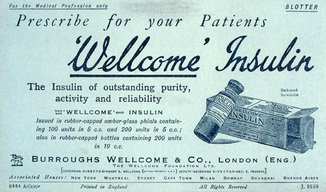
Paul Hwang
Diabetes Mellitus, is known as "sugar disease," is a disease that killed thousands of people every year. This is until insulin was discovered in 1921. Before insulin was created, the disease was a death sentence. People could not survive the brutal disease. Insulin is a peptide hormone composed of 51 amino acids residues. Insulin became the miracle of the century.
(http://www.enotes.com/1920-medicine-health-american-decades/insulin)
Diabetes Mellitus, is known as "sugar disease," is a disease that killed thousands of people every year. This is until insulin was discovered in 1921. Before insulin was created, the disease was a death sentence. People could not survive the brutal disease. Insulin is a peptide hormone composed of 51 amino acids residues. Insulin became the miracle of the century.
(http://www.enotes.com/1920-medicine-health-american-decades/insulin)
Vitamin c & e

Paul Hwang
In 1922 two American scientists discovered vitamin E. The two scientist were Dr. Herbert McLean Evans and K.S . Bishop. The "E" in Vitamin E was named after Dr. Evans. Finding vitamin e was a important discovery, because it is found in many poly saturated fats in food. Foods that contain this vitamin are margarine, peanut oil, sunflower seeds, walnuts, and other hearty foods. Vitamin E protects and restores body tissues. Following behind a scientist by the name of Gladys Anderson Emerson will isolate the vitamin in it's purist form calling vitamin a.
(http://library.thinkquest.org/C005846/categories/science/science.htm)
In 1922 two American scientists discovered vitamin E. The two scientist were Dr. Herbert McLean Evans and K.S . Bishop. The "E" in Vitamin E was named after Dr. Evans. Finding vitamin e was a important discovery, because it is found in many poly saturated fats in food. Foods that contain this vitamin are margarine, peanut oil, sunflower seeds, walnuts, and other hearty foods. Vitamin E protects and restores body tissues. Following behind a scientist by the name of Gladys Anderson Emerson will isolate the vitamin in it's purist form calling vitamin a.
(http://library.thinkquest.org/C005846/categories/science/science.htm)
liquid-fueled rocket
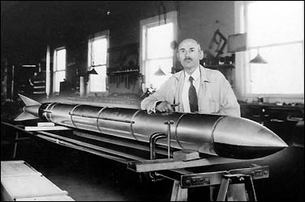
Paul Hwang
In 1926 Robert Hutchings Goddard became the first person to launch a liquid-fuel rocket, the forerunner of todays awesome giants that have lead to man on the moon and exploratory visits by spacecraft to many of the planets. In the 1920's Robert announced that he believes it was possible to send a rocket into space that is able to carry a pay load to the moon. People took his word as a joke, until he proved them wrong by creating the first liquid-fueled rocket. He was a man that broke the common misconception of reaching for the stars.
(http://space.about.com/od/biographies/a/robertgoddard.htm)
In 1926 Robert Hutchings Goddard became the first person to launch a liquid-fuel rocket, the forerunner of todays awesome giants that have lead to man on the moon and exploratory visits by spacecraft to many of the planets. In the 1920's Robert announced that he believes it was possible to send a rocket into space that is able to carry a pay load to the moon. People took his word as a joke, until he proved them wrong by creating the first liquid-fueled rocket. He was a man that broke the common misconception of reaching for the stars.
(http://space.about.com/od/biographies/a/robertgoddard.htm)
Band-aids
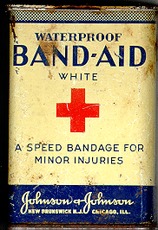
Paul Hwang
A woman named Josephine Dickson married a man that worked for a company called Johnson & Johnson. Josephine was known as a woman that was accident prone. She would frequently get cuts every time she would step into a kitchen. Instead of keeping her out of the kitchen, the loving husband would have a great idea and would soon create a product that would stop bleeding, and protect cuts called the Band-Aids. The Band-Aid would soon be a product that every house hold would carry around.
A woman named Josephine Dickson married a man that worked for a company called Johnson & Johnson. Josephine was known as a woman that was accident prone. She would frequently get cuts every time she would step into a kitchen. Instead of keeping her out of the kitchen, the loving husband would have a great idea and would soon create a product that would stop bleeding, and protect cuts called the Band-Aids. The Band-Aid would soon be a product that every house hold would carry around.
Sliced Bread
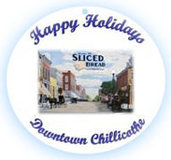
Andrew Ramirez
The inventor for the bread-slicing machine was from Iowa but it was first used in Chillicothe, Missouri in 1928. Before the invention the bread had to be sliced at home by hand.
(http://www.homeofslicedbread.com)
The inventor for the bread-slicing machine was from Iowa but it was first used in Chillicothe, Missouri in 1928. Before the invention the bread had to be sliced at home by hand.
(http://www.homeofslicedbread.com)
Auto Kamp kook kit
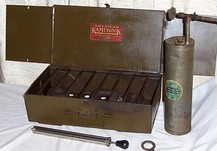
Andrew Ramirez
The invention of the Auto Kamp Kook Kit in the early 1920s alowed travelers to cook their food on the go while they explored the country with an earlier invention; the automobile. The stove ran off the same fuel as their car did so it was more convenient for them to use it. They came out with later models with two burners and legs so that it was easier for the user to cook.
(http://www.californiamuseum.org/sites/default/files/ArtifactMonthMay10.pdf)
The invention of the Auto Kamp Kook Kit in the early 1920s alowed travelers to cook their food on the go while they explored the country with an earlier invention; the automobile. The stove ran off the same fuel as their car did so it was more convenient for them to use it. They came out with later models with two burners and legs so that it was easier for the user to cook.
(http://www.californiamuseum.org/sites/default/files/ArtifactMonthMay10.pdf)
car Radio
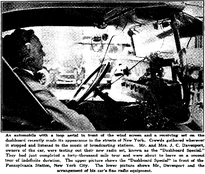
Andrew Ramirez
The first car radio was invented in the early 1920s. In the beginning the used normal portable radios in their car. They also began using the radios for police and military reasons. By 1925 the car radio was mass produced by "Radio Auto Distributors".
(http://www.radiomuseum.org/forum/first_car_radios_history_and_development_of_early_car_radios.html)
The first car radio was invented in the early 1920s. In the beginning the used normal portable radios in their car. They also began using the radios for police and military reasons. By 1925 the car radio was mass produced by "Radio Auto Distributors".
(http://www.radiomuseum.org/forum/first_car_radios_history_and_development_of_early_car_radios.html)
Frozen Foods

Andrew Ramirez
The idea of frozen foods came from a man named Clarence Birdseye. In 1923 he invested seven dollars worth of material and made 22 million dollars by selling his patent and trademarks!
(http://inventors.about.com/library/inventors/blfrfood.htm)
The idea of frozen foods came from a man named Clarence Birdseye. In 1923 he invested seven dollars worth of material and made 22 million dollars by selling his patent and trademarks!
(http://inventors.about.com/library/inventors/blfrfood.htm)
